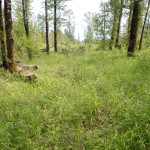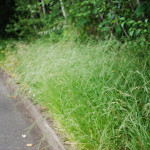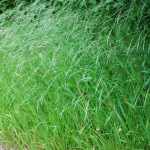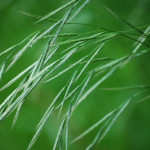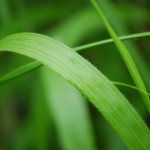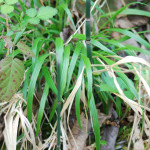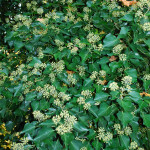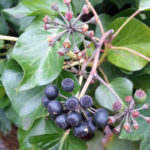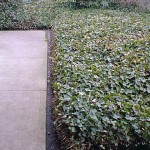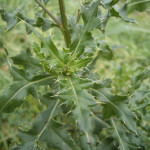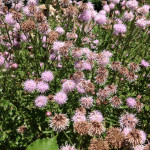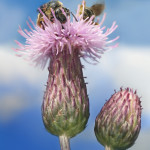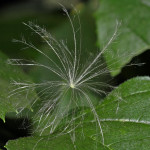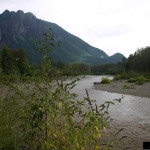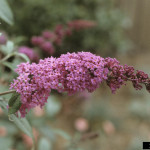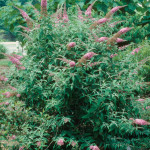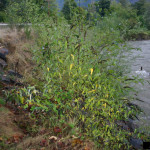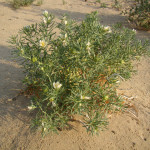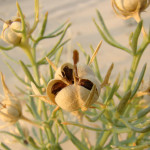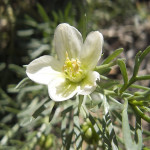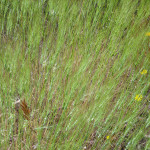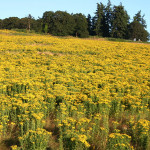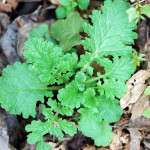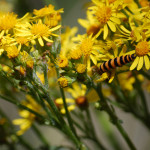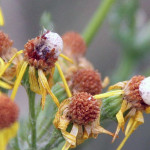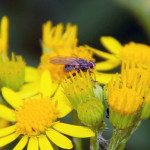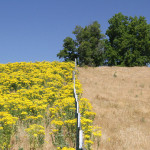Gallery:
- False brome invading a floodplain
- False brome invading a roadside
- False brome invasion
- False brome infloresence
- False brome leaf blade
- False brome leaves
Common names:
False brome, slender false brome, perennial false brome
Scientific Name:
Brachypodium sylvaticum
Description:
This attractive perennial grass forms bunches of lime-green leaf blades. Leaf color is bright green throughout the growing season turning bleached white during the winter, a strong indicator of false brome. Leaf margins and lower stems are hairy with no red streaking on the stems. Flowers and seeds are spiked and droopy with no stalks. False brome appears to be self-fertile producing few to a couple hundred seeds per plant. Isolated plants are observed to produce viable seeds becoming new weed epicenters complicating control efforts. Seed movement is by wildlife with both birds and small mammals transporting seeds. Long-distance dispersal is predominantly through logging activities, roadside maintenance equipment and recreational activities within infested areas.
Life cycle:
Height of mature plants
3 feet
Flower color:
White
Bloom time:
May through July
Look-a-likes:
False brome is similar in appearance to a native brome, Columbia brome (Bromus vulgaris). False brome is densely hairy on the leaf blade margin while Columbia brome is sparsely hairy.
Habitat:
It can grow in a variety of habitats including forests, forest edges, woodlands, riparian areas, prairies and roadsides.
Impacts:
It is a fast-spreading, invasive grass that displaces native flora. It can form dense, monotypic colonies in both forest understories and open woodlands.
Noxious Weed Listing:
Origin:
Pakistan, Europe, temperate regions of Asia, mountainous regions of tropical Asia, Northern Africa and Macronesia
Links:
Oregon Noxious Weed Profile
Washington Noxious Weed Profile
Invasive.org profile
CABI Invasive Species Compendium

